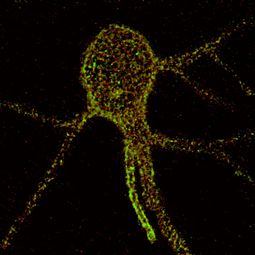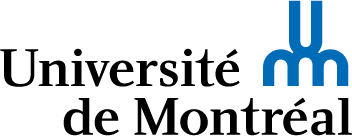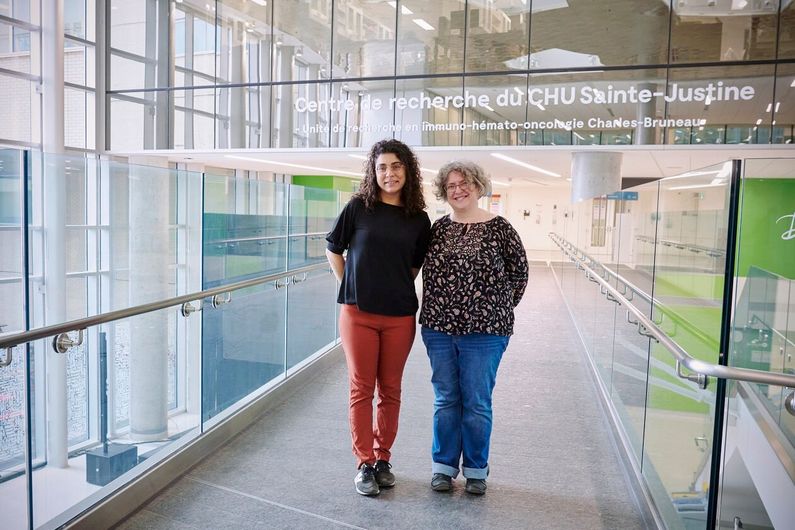Mimicking brain plasticity in children to control PTS
- Salle de presse
05/18/2023
- UdeMNouvelles
A CHU Sainte-Justine team led by UdeM neuroscientist Graziella Di Cristo has made an important breakthrough in the treatment of people suffering from symptoms associated with post-traumatic stress.
Would temporarily increasing brain plasticity in adults help lessen the fear and anxiety felt by people who've had a traumatic experience? That's what Graziella Di Cristo, a professor of neurosciences at Université de Montréal, decided to find out.
With her team at the UdeM-affiliated CHU Sainte-Justine hospital centre, Di Cristo succeeded in controlling fear responses in mice by inducing desensitization to fear memories and simultaneously increasing the malleability of their brain temporarily via control of gene activation.
Published in Molecular Psychiatry, the results represent a promising breakthrough for the treatment of people with symptoms related to post-traumatic stress.
Fear arising from a traumatic event can lead to persistent memories that induce phobias, anxiety and even post-traumatic stress disorder. In severe cases, gradual desensitization therapies supervised by a therapist can be used to dissociate fear responses from memories.
Previous studies have shown that this type of therapy is more effective with children, whose more malleable brains facilitate the creation of new memories and the dissociation of fear responses.
Di Cristo’s lab investigates GABAergic interneurons, inhibitory cells that slow down brain activity. Among these interneurons, cells expressing the protein parvalbumin control neuronal network and circuit dynamics in the brain, including the parts that modulate thoughts and fears.
A gene and a protein associated with brain plasticity

Image of a parvalbumin interneuron showing the perineuronal nets (in red) composed of Aggrecan protein (in green). You can clearly see the net-like structure that condenses around the cell body and proximal dendrites of the parvalbumin interneuron at P60 in the cortex. By surrounding the afferent synapses on the cell body and dendrites, the perineuronal nets stabilize and strengthen the synaptic connections.
Credit: Image taken by Marisol Lavertu-Jolin using a Leica confocal microscope at the CHU Sainte-Justine Research Centre’s imaging facility.In children’s brains, the parvalbumin cell network is more malleable due to the lower presence of the protein aggrecan. “This protein surrounds and solidifies parvalbumin cells during the maturation process of the brain through a structure called perineuronal nets, making them less malleable,” said Di Cristo.
“In collaboration with the research teams of Graciela Piñeyro and Gregor U. Andelfinger, we discovered that the protein aggrecan, encoded by the Acan gene, was specifically expressed in parvalbumin-positive interneurons," added Marisol Lavertu-Jolin, a PhD student at the time and first author of the study.
"We had found a possible target to destabilize the solidification of perineuronal nets, without affecting other neuronal populations, by decreasing the expression of the Acan gene."
How to control the production of aggrecan
Collaborating with a research team based in India, the CHU Sainte-Justine team developed a molecule called siARN which not only has the property to inhibit a gene, but also to cross the blood-brain barrier through the bloodstream.
“We had to verify that the siARN, injected in the blood, specifically inhibited the Acan gene and therefore increased malleability of the brain,” explained Di Cristo. “This is key to promoting the creation of new memories and allowing the desensitization of fear-inducing memories to be effective in the long term.”
The experiment was a success. The temporary increase in brain plasticity allowed the formation of new memories in adult mice and the decrease of fear responses to traumatic events.
This groundbreaking study, the researchers say, paves the way for potential clinical research in adults with post-traumatic stress disorder to improve the long-term success of exposure therapies.
About this study
"Acan downregulation in parvalbumin GABAergic cells reduces spontaneous recovery of fear memories," by Graziella Di Cristo et al, was published May 2, 2023 in Molecular Psychiatry. Funding was provided by the Canadian Institutes of Health Research (CIHR), the Natural Sciences and Engineering Research Council of Canada (NSERC), the EraNet-Neuron network, the Fonds de Recherche du Québec en Santé -S (FRQS) and the CHU Sainte-Justine Foundation.
About the CHU Sainte-Justine Research Centre
CHU Sainte-Justine Research Centre is a leading mother-child research institution affiliated with Université de Montréal. It brings together more than 200 research investigators, including over 90 clinicians, as well as 350 graduate and post-graduate students focused on finding innovative means of prevention, faster and less invasive treatments, and personalized approaches to medicine. The Centre is part of CHU Sainte-Justine, which is the largest mother-child hospital in Canada and second most important pediatric hospital in North America.
Media contact
-
Danika Landry
CHU Sainte-Justine -
Julie Gazaille
Université de Montréal
Tel: 514 343-6796













